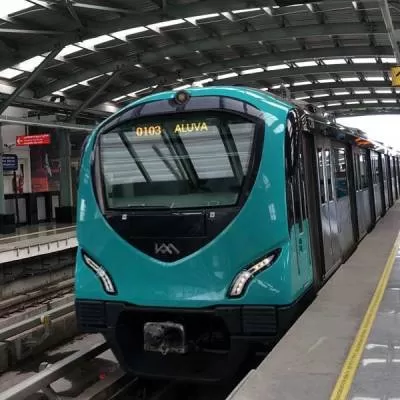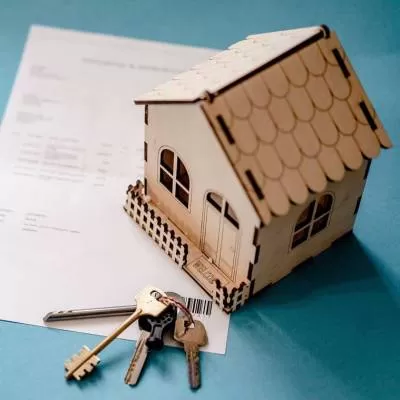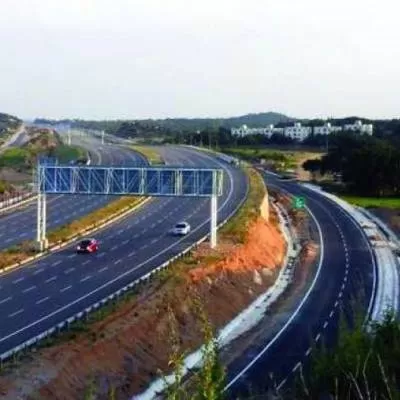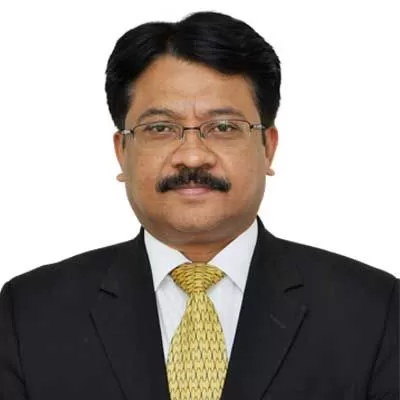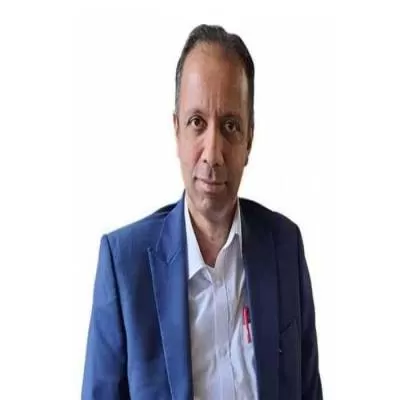- Home
- Infrastructure Urban
- ECONOMY & POLICY
- Namma engineer!
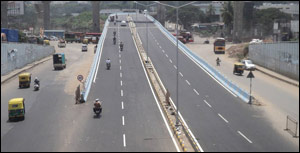
Namma engineer!
"The prosperity and growth of a nation is measured by its development in various sectors, from communication and housing to infrastructure facilities," states Prabhakar Nayak, Chief Engineer, Bangalore Development Authority (BDA). "And it is civil engineers who contribute to this development; they are the nation builders. I wanted to be part of this nation-building team and hence I opted for civil engineering." Indeed, in his career spanning three decades, Nayak has been involved in almost every form of nation building in both rural and urban areas, from flyovers, underpasses, roads, metro rail and water supply systems to residential and commercial complexes, institutional buildings, playgrounds, Anganwadi centres, rejuvenation of lakes and development of new layouts with infrastructure facilities.
Now at BDA, apart from monitoring the engineering section and new project proposals, he has several ongoing projects including 10 flyovers; an underpass at Gurugunteplaya (Rs 125.39 crore); Alisda to BEL Circle elevated corridor (Rs 191.86 crore) both being executed under the Jawaharlal Nehru National Urban Renewal Mission (JNNURM); elevated corridor from Basaveshwara circle to Hebbal at the concept stage (Rs 1,100 crore); improvement of Outer Ring Road at the tendering stage (estimated at Rs 60.44 crore); 17 affordable housing projects expected to generate 30,000 homes; rejuvenation of 110 lakes and the formation of Arkavathy and Nadaprabhu Kempegowda layouts. Resolving various problems that crop up while executing projects is also part and parcel of his work. One such major issue he resolved earlier this year was the development of Arkavathi layout, which was in limbo for nearly a decade. "The work, initiated in 2004, was held up owing to land acquisition problems," shares Naik, who hails from Ankola in the Uttar Kannada District of Karnataka. "The landlords were not ready to part with their land and went to court. After taking charge this year, I held several rounds of discussions with them and made them agree to our 60:40 compensation scheme where 40 per cent of the developed land is given back to them as compensation. Now, the work is in full swing and it will be completed by March 2014." The 55-year-old, who loves to play tennis and badminton during his leisure time, considers the ongoing Bangalore Metro and Peripheral Ring Road (PRR) his most challenging projects, the latter being his pet project too. Read on to learn more about his projects and perspectives:
Pet project
With the exponential growth of Bengaluru city, traffic volumes have increased tremendously, leading to heavy congestion. The aim of the PRR is to isolate the inter-state vehicular traffic entering the city, thereby reducing traffic congestion on all the interior roads of Bengaluru city. Almost parallel to the existing Outer Ring Road, PRR connects Tumkur road (NH-4 Madanayakahalli) to Hosur road (NH-7 Hebbagodi) crossing 10 major junctions at a length of 65 km. It comprises a four-lane (14 m) main carriageway on either side and a three-lane (11 m) service road on either side with a utility corridor and green strip in a total width of 75 m.
It is signal-free corridor along its entire length. The cost of the project with intelligent traffic monitoring systems and international standard facilities is estimated at Rs 5,800 crore. We have sought financial assistance from The Japan International Cooperation Agency with approval from the Ministry of Road Transport & Highways. The formalities are in the final stage of completion. This is a very important project as it will meet current and future traffic demands.
Rail reach
The Metro rail is a very challenging project as it is the first Metro rail project in India commissioned with 750 v DC running across 42.30 km with elevated and underground stretches. I have been involved with it from inception to completion of Reach 1, as well as the ongoing Reaches 3, 3a and 3b where trial runs are going on. The Metro will make travel immensely comfortable, apart from adding to the beauty of the Bengaluru skyline. With speed levels at a maximum 80 kmph and average 34 kmph, travel time from end to end will be 33-44 minutes. Namma Metro is a major environment-friendly addition to the city as it will significantly contribute to the reduction of carbon emissions. After the completion of Phase-I, we will take up Phase-II comprising extensions of all four reaches of Phase-I and two new lines, which are at a preliminary stage now.
Planned progress
Since inception, BDA has been involved in the development of layouts with all the infrastructure facilities, including water supply, sanitary facilities and electrification. These layouts are then allotted to private parties for residential development through a tendering process. This is a good concept as development takes place in a systematic way adhering to all regulations. Bengaluru is famous for planned development. Land acquisition was a major hurdle to this development scheme as landowners were often not ready to give up their land. This is why we worked out this scheme of sharing development benefits with the owners in the ratio of 60:40. Here, we do not pay any acquisition cost but give back 40 per cent of the developed land to the landlord who has full rights to use it as he desires or even sell it.
Professional perspective
Material, product, quality improvements, effective use of resources without wastage, manpower optimisation and performance maximisation are the challenges a civil engineer has to tackle today. A positive attitude with readiness to overcome roadblocks and willingness to learn from mistakes are necessary to be successful in this profession. I would advise youngsters entering the profession to gain as much knowledge as possible on the subject through studies, training and discussions with experts as knowledge is power. Then, convert the theoretical knowledge into practical applications with creativity. Develop functional alternatives and be ready with two solutions if possible with perfection as the ultimate aim.
Challenge zone
Project 1
Project: Bangalore Metro Rail (Reach 1)
Period: 2010-2011
Length: 7 km
Cost: Rs 1,500 crore
Implementing agency: Bangalore Metro Rail Corporation Ltd (BMRCL)
Background: A special purpose vehicle, BMRCL, a JV between the Government of India and Government of Karnataka was formed to execute the project. Phase-1 of the project comprising four reaches is under implementation at an estimated cost of Rs 11,609 crore. The operation on Reach 1 (MG Road to Baiyappanahalli Station) was opened in October 2011. Work on other reaches is in progress.
Features: This is the first Metro rail project in India commissioned with 750 v DC. The entire length of the corridor to be completed in Phase-1 is 42.30 km with the east-west corridor stretching to 18.10 km and the north-south corridor to 24.20 km. Of this, 33.48 km will be elevated and 8.82 km underground with 40 stations (33 elevated and seven underground).
Challenges: Land acquisition in the urban environment was a major challenge that was overcome by using government lands for stations and depots wherever possible and providing an attractive rehabilitation package to private landowners. Pruning and cutting trees was another challenge. "Although we were cutting and pruning trees where it was absolutely necessary, environmentalists opposed it and went to court," says Nayak.
"Later the issue was settled in Lok Adalat. We have planted 10 trees for every tree cut and 15,000 such saplings are already blossoming. Also, the whole project was on a pile foundation. Hence, carrying out the work in the city amid heavy traffic with restrictions on RMC delivery vehicles during the day and in residential areas where there was objection to working at night was another challenge."
PROJECT 2
Project: Bhadrappa Layout Junction Flyover
Period: 2010-2013 (completed in July)
Cost: Rs 19.20 crore
Client: Bangalore Development Authority
Implementing agency: PJB Engineers Pvt Ltd
Background: Bhadrappa Layout's main road crosses the Outer Ring Road (ORR) that connects NH-4 and NH-7. "The signals on this road hampered the smooth flow of traffic in the ORR," shares Nayak. "Hence the construction of a signal-free flyover at this junction became essential to circumvent the heavy traffic congestion. Since the commissioning of the flyover, the traffic flow on ORR has been smooth and safe." Features: The 497-m-long flyover is a bi-directional one with four spans of 20 m and one obligatory span of 35 m. Each span consists of 12 pre-stressed girders with cast-in-situ RCC deck slab. The total width of 24 m comprises a 11.5-m carriageway on either side with 1-m width in the central median. The approach ramp on the NH-4 side is 180 m; on Old Madras Road, it is 202 m in length.
Challenges: The work was getting delayed owing to the laying of a gas pipeline by GAIL India at a depth of 7 m and laying of a sanitary line on the RHS service road. "We had to pressurise the concerned authorities to speed up the work and complete it," reveals Nayak. "Carrying out the flyover work amid several limitations that come with working in an arterial road like ORR and controlling and regulating the traffic flow was also a major challenge."
In the continuing series of interviews with prominent civil engineers pan-India, JANAKI KRISHNAMOORTHI meets Prabhakar Nayak, Chief Engineer, Bangalore Development Authority. "The prosperity and growth of a nation is measured by its development in various sectors, from communication and housing to infrastructure facilities," states Prabhakar Nayak, Chief Engineer, Bangalore Development Authority (BDA). "And it is civil engineers who contribute to this development; they are the nation builders. I wanted to be part of this nation-building team and hence I opted for civil engineering." Indeed, in his career spanning three decades, Nayak has been involved in almost every form of nation building in both rural and urban areas, from flyovers, underpasses, roads, metro rail and water supply systems to residential and commercial complexes, institutional buildings, playgrounds, Anganwadi centres, rejuvenation of lakes and development of new layouts with infrastructure facilities. Now at BDA, apart from monitoring the engineering section and new project proposals, he has several ongoing projects including 10 flyovers; an underpass at Gurugunteplaya (Rs 125.39 crore); Alisda to BEL Circle elevated corridor (Rs 191.86 crore) both being executed under the Jawaharlal Nehru National Urban Renewal Mission (JNNURM); elevated corridor from Basaveshwara circle to Hebbal at the concept stage (Rs 1,100 crore); improvement of Outer Ring Road at the tendering stage (estimated at Rs 60.44 crore); 17 affordable housing projects expected to generate 30,000 homes; rejuvenation of 110 lakes and the formation of Arkavathy and Nadaprabhu Kempegowda layouts. Resolving various problems that crop up while executing projects is also part and parcel of his work. One such major issue he resolved earlier this year was the development of Arkavathi layout, which was in limbo for nearly a decade. "The work, initiated in 2004, was held up owing to land acquisition problems," shares Naik, who hails from Ankola in the Uttar Kannada District of Karnataka. "The landlords were not ready to part with their land and went to court. After taking charge this year, I held several rounds of discussions with them and made them agree to our 60:40 compensation scheme where 40 per cent of the developed land is given back to them as compensation. Now, the work is in full swing and it will be completed by March 2014." The 55-year-old, who loves to play tennis and badminton during his leisure time, considers the ongoing Bangalore Metro and Peripheral Ring Road (PRR) his most challenging projects, the latter being his pet project too. Read on to learn more about his projects and perspectives: Pet project With the exponential growth of Bengaluru city, traffic volumes have increased tremendously, leading to heavy congestion. The aim of the PRR is to isolate the inter-state vehicular traffic entering the city, thereby reducing traffic congestion on all the interior roads of Bengaluru city. Almost parallel to the existing Outer Ring Road, PRR connects Tumkur road (NH-4 Madanayakahalli) to Hosur road (NH-7 Hebbagodi) crossing 10 major junctions at a length of 65 km. It comprises a four-lane (14 m) main carriageway on either side and a three-lane (11 m) service road on either side with a utility corridor and green strip in a total width of 75 m. It is signal-free corridor along its entire length. The cost of the project with intelligent traffic monitoring systems and international standard facilities is estimated at Rs 5,800 crore. We have sought financial assistance from The Japan International Cooperation Agency with approval from the Ministry of Road Transport & Highways. The formalities are in the final stage of completion. This is a very important project as it will meet current and future traffic demands. Rail reach The Metro rail is a very challenging project as it is the first Metro rail project in India commissioned with 750 v DC running across 42.30 km with elevated and underground stretches. I have been involved with it from inception to completion of Reach 1, as well as the ongoing Reaches 3, 3a and 3b where trial runs are going on. The Metro will make travel immensely comfortable, apart from adding to the beauty of the Bengaluru skyline. With speed levels at a maximum 80 kmph and average 34 kmph, travel time from end to end will be 33-44 minutes. Namma Metro is a major environment-friendly addition to the city as it will significantly contribute to the reduction of carbon emissions. After the completion of Phase-I, we will take up Phase-II comprising extensions of all four reaches of Phase-I and two new lines, which are at a preliminary stage now. Planned progress Since inception, BDA has been involved in the development of layouts with all the infrastructure facilities, including water supply, sanitary facilities and electrification. These layouts are then allotted to private parties for residential development through a tendering process. This is a good concept as development takes place in a systematic way adhering to all regulations. Bengaluru is famous for planned development. Land acquisition was a major hurdle to this development scheme as landowners were often not ready to give up their land. This is why we worked out this scheme of sharing development benefits with the owners in the ratio of 60:40. Here, we do not pay any acquisition cost but give back 40 per cent of the developed land to the landlord who has full rights to use it as he desires or even sell it. Professional perspective Material, product, quality improvements, effective use of resources without wastage, manpower optimisation and performance maximisation are the challenges a civil engineer has to tackle today. A positive attitude with readiness to overcome roadblocks and willingness to learn from mistakes are necessary to be successful in this profession. I would advise youngsters entering the profession to gain as much knowledge as possible on the subject through studies, training and discussions with experts as knowledge is power. Then, convert the theoretical knowledge into practical applications with creativity. Develop functional alternatives and be ready with two solutions if possible with perfection as the ultimate aim. Challenge zone Project 1 Project: Bangalore Metro Rail (Reach 1) Period: 2010-2011 Length: 7 km Cost: Rs 1,500 crore Implementing agency: Bangalore Metro Rail Corporation Ltd (BMRCL) Background: A special purpose vehicle, BMRCL, a JV between the Government of India and Government of Karnataka was formed to execute the project. Phase-1 of the project comprising four reaches is under implementation at an estimated cost of Rs 11,609 crore. The operation on Reach 1 (MG Road to Baiyappanahalli Station) was opened in October 2011. Work on other reaches is in progress. Features: This is the first Metro rail project in India commissioned with 750 v DC. The entire length of the corridor to be completed in Phase-1 is 42.30 km with the east-west corridor stretching to 18.10 km and the north-south corridor to 24.20 km. Of this, 33.48 km will be elevated and 8.82 km underground with 40 stations (33 elevated and seven underground). Challenges: Land acquisition in the urban environment was a major challenge that was overcome by using government lands for stations and depots wherever possible and providing an attractive rehabilitation package to private landowners. Pruning and cutting trees was another challenge. "Although we were cutting and pruning trees where it was absolutely necessary, environmentalists opposed it and went to court," says Nayak. "Later the issue was settled in Lok Adalat. We have planted 10 trees for every tree cut and 15,000 such saplings are already blossoming. Also, the whole project was on a pile foundation. Hence, carrying out the work in the city amid heavy traffic with restrictions on RMC delivery vehicles during the day and in residential areas where there was objection to working at night was another challenge." PROJECT 2 Project: Bhadrappa Layout Junction Flyover Period: 2010-2013 (completed in July) Cost: Rs 19.20 crore Client: Bangalore Development Authority Implementing agency: PJB Engineers Pvt Ltd Background: Bhadrappa Layout's main road crosses the Outer Ring Road (ORR) that connects NH-4 and NH-7. "The signals on this road hampered the smooth flow of traffic in the ORR," shares Nayak. "Hence the construction of a signal-free flyover at this junction became essential to circumvent the heavy traffic congestion. Since the commissioning of the flyover, the traffic flow on ORR has been smooth and safe." Features: The 497-m-long flyover is a bi-directional one with four spans of 20 m and one obligatory span of 35 m. Each span consists of 12 pre-stressed girders with cast-in-situ RCC deck slab. The total width of 24 m comprises a 11.5-m carriageway on either side with 1-m width in the central median. The approach ramp on the NH-4 side is 180 m; on Old Madras Road, it is 202 m in length. Challenges: The work was getting delayed owing to the laying of a gas pipeline by GAIL India at a depth of 7 m and laying of a sanitary line on the RHS service road. "We had to pressurise the concerned authorities to speed up the work and complete it," reveals Nayak. "Carrying out the flyover work amid several limitations that come with working in an arterial road like ORR and controlling and regulating the traffic flow was also a major challenge."


